- Administrator
- Albums and Singles

Anoice
The Black Rain
Anoice's first album for Important had a modest (but critically affectionate) impact upon its release. However, sales of the record have been steady & strong since it originally came out in 2006. Now, six years later we're pleased to finally offer The Black Rain, Anoice's reaction to both the darkness & hope that engulfed Japan after the 2011 earthquake, Tsunami & nuclear meltdown. Black Rain was written throughout 2011 and recorded in Tokyo and London. The Black Rain is both a reflection on disaster and a prayer for healing.
The structure of The Black Rain flows as an album full of preludes working up to the gigantic full band composition titled Finale. As this finale comes to a close the attentive listener is rewarded with a soft landing called Fall Asleep which brings brings the album to a close. Most of the arrangements
for The Black Rain are comprised of strings, piano and organ. Pianos were recorded at various locations including a hotel ruined by the earthquake.
Pieces from The Black Rain are inlcuded on a charity compillation titled More Hope For Japan and a Louis Vuitton Iphone application.
The Black Rain was originally inteded to be released in Spring of 2011 but the release was witheld due to the the title of the album and the provocative sadness, rage and hatred against apathy expressed in the compositions. The distribution of music throughout many districts of Japan was halted giving Anoice more time work on the record. Although the group did not originally set out to make a record which dealt with the theme of nuclear disaster everything changed after the tragic events of the March 11th.
TRACK LISTING
self-portrait
colder than thermite
ripple
tipsy dance
cat in the rain
white paper
drops
the end of something
finale
fall asleep
REVIEWS
If you're looking for a pleasant diversion, look elsewhere—this album was written by the Japanese quintet Anoice in the wake of the catastrophic earthquake, tsunami, and nuclear accident that devastated parts of coastal Japan in March of 2011. Presented as "both a reflection on disaster and a prayer for healing," Black Rain is quiet but intense, and while it is remarkably beautiful it's also poignant to the point of heartbreak. This group plays mostly acoustic instruments (piano, cello, viola, percussion, guitar) but also incorporates synthesizers and what sound like occasional samples into its compositions. At times those compositions are deceptively simple-sounding, and sometimes (as on the quiet and lovely "Ripple") they are genuinely simple. But they effectively convey a sense of both loss and hope, of contemplation and occasionally anger. The first eight tracks on the program build up to the appropriately-titled ninth track, "Finale," which is sonically big without quite lapsing into bombast, and emotionally powerful without lapsing into bathos. The album then ends with "Fall Asleep," a piece of nearly subliminal quietness and gentle beauty. Crisis often produces art, but not very often does it result in art this engaging.
All Music Guide 2012
Read More
- Administrator
- Albums and Singles
We are very proud to be releasing brand new lovesliescrushing material. Scott Cortez & Melissa Arpin-Duimstra deliver gorgeous washes of textured guitars & angelic ethereal vocals to create perfect dreamy summer drones. Everything was recorded in 2012.
Pt. I - Broken Aureate Echo
Pt. II - She Is Above The Clouds
Pt. III - A Bird Flew To The Sun
Stamped black bottom CDR, A7 silver envelopes, three 5"x7" prints & one vellum print. Each copy is handmade. Edition of 200.
If you don't know this band, do yourself a favor and read a bit about them - they've been around since the early 90s & they're one of TQA's biggest influences.
“Through their use of low tech means and focusing on the blending of guitar noise and electronic voice processing, lovesliescrushing can be seen as the early 'missing link' between the likes of Slowdive and Fennesz...works that contain an element of sonic mystery and still sound timeless." - Richard Chartier LINE
More information here.
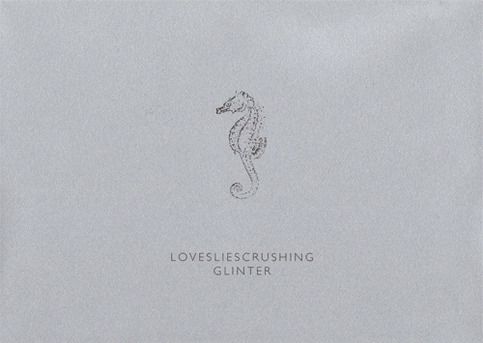
Read More
- Administrator
- Albums and Singles
Jon Mueller and James Plotkin first combined forces on Physical Changes, scorching the leading LP side of Mueller's 2009 multi-format collaborative investigation. Forging Mueller’s blistering percussion and rolling hills of drums with Plotkin's searing guitar and melting electronics, a sturdy alloy was formed. When both musicians were asked to perform at the Utech Records Music Festival in June 2011, at which they appeared as a duo, the pair spent the proceeding days spontaneously unfurling Terminal Velocity.
Recorded in rural Wisconsin just outside of Mueller's native Milwaukee, Terminal Velocity is an effort of concentration. On the brink of implosion, the duo reduces dense washes of percussion and guitar to thick crusts, at times deceivingly with a whispered intensity. Sizzling drums meet electronic warbles as two great forces restrain each other to a constant speed.
Mastered by Plotkin, cut direct to metal and pressed on 200g virgin vinyl, Terminal Velocity is presented in an edition of 500 copies. Packaged in a heavy Stoughton tip-on gatefold, the jacket is hand-numbered on the spine and features a textured paper to enhance Karlynn Holland's graphite drawings the album accompanies.
More information here.
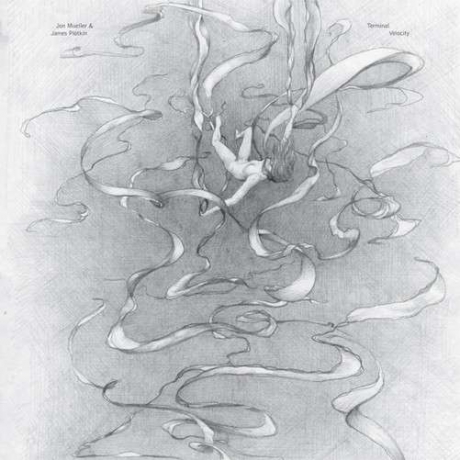
Read More
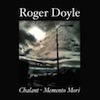 Every once in a while, a familiar artist takes me completely by surprise. One Sunday night, I was making the long drive home to Dublin from my then fiancée's place in Northern Ireland. On the radio was the weekly contemporary music show on the national classical music station. This particular edition was dedicated to a work in progress by Roger Doyle; different segments being played with an interview with Doyle interspersed between them. I have always been fond of Doyle's music but listening to parts of what would eventually become Chalant was a revelation. Built around old answering machine messages, Doyle weaved his own past through his music and combined bittersweet memory with an overreaching arc of life's progress and the construction of the artist's cannon. Throughout the next few days and weeks, the music and themes of the work resonated within my head. This was a deeply moving and thought-provoking composition and I could not wait to listen to the album properly.
Every once in a while, a familiar artist takes me completely by surprise. One Sunday night, I was making the long drive home to Dublin from my then fiancée's place in Northern Ireland. On the radio was the weekly contemporary music show on the national classical music station. This particular edition was dedicated to a work in progress by Roger Doyle; different segments being played with an interview with Doyle interspersed between them. I have always been fond of Doyle's music but listening to parts of what would eventually become Chalant was a revelation. Built around old answering machine messages, Doyle weaved his own past through his music and combined bittersweet memory with an overreaching arc of life's progress and the construction of the artist's cannon. Throughout the next few days and weeks, the music and themes of the work resonated within my head. This was a deeply moving and thought-provoking composition and I could not wait to listen to the album properly.
- Administrator
- Albums and Singles
 Every once in a while, a familiar artist takes me completely by surprise. One Sunday night, I was making the long drive home to Dublin from my then fiancée’s place in Northern Ireland. On the radio was the weekly contemporary music show on the national classical music station. This particular edition was dedicated to a work in progress by Roger Doyle; different segments being played with an interview with Doyle interspersed between them. I have always been fond of Doyle’s music but listening to parts of what would eventually become Chalant was a revelation. Built around old answering machine messages, Doyle weaved his own past through his music and combined bittersweet memory with an overreaching arc of life’s progress and the construction of the artist’s cannon. Throughout the next few days and weeks, the music and themes of the work resonated within my head. This was a deeply moving and thought-provoking composition and I could not wait to listen to the album properly.
Every once in a while, a familiar artist takes me completely by surprise. One Sunday night, I was making the long drive home to Dublin from my then fiancée’s place in Northern Ireland. On the radio was the weekly contemporary music show on the national classical music station. This particular edition was dedicated to a work in progress by Roger Doyle; different segments being played with an interview with Doyle interspersed between them. I have always been fond of Doyle’s music but listening to parts of what would eventually become Chalant was a revelation. Built around old answering machine messages, Doyle weaved his own past through his music and combined bittersweet memory with an overreaching arc of life’s progress and the construction of the artist’s cannon. Throughout the next few days and weeks, the music and themes of the work resonated within my head. This was a deeply moving and thought-provoking composition and I could not wait to listen to the album properly.
Just when Chalant had drifted from my mind, it suddenly came into existence again. It would be a little while before I would get to hear it completely, however. Once I got to sit down with the album, my first few listens were a combination of recollection and integration of the unheard material. It was as good as I had remembered and the concept had been fleshed out into a very robust whole. An opening volley of piano movements set the tone for the album; Doyle’s playing is poignant without being morbid or depressive. When the first voices appear, they are those of Doyle’s parents. Instead of momentous advice to Doyle, their words are the normal kind thoughts of caring parents. Doyle’s mother worries about her son’s health and his father lets him know about post that has arrived for him.
The feelings of being contacted from beyond the grave continue into the album’s middle section with a stunning vocal performance by the late Jonathan Philbin Bowman. Similar in tone to some of Philbin Bowman’s radio spots where he would offer some thoughts for the day, "Coat-hanger Kisses" was a freer, more poetic look at his world which has more in common with a Joycean stream of consciousness than his more familiar (to the public at least) journalistic style. Doyle gives Philbin Bowman a backing that he deserves, the rolling delivery of the words matched by tidal piano lines. The fact that this was hardly a planned piece (Philbin Bowman passed away in 2000) but it works like the two of them had sat down and written it together.
Despite the album’s subtitle of Memento Mori, there is more to Chalant than death, even if mortality stalks the various melodies throughout the album. Doyle explores the concept of family and the process of passing the torch from generation to generation with his focus on his own son’s life. Paavo Evans-Doyle appears at several points, starting with his endearing messages on "Back in Time" where, as a young boy, he tries to leave more and more inventive messages on his father’s answering machine. Placed in between the messages of Doyle’s parents and Philbin Bowman, Paavo represents another loss but this time it is a loss of innocence and the knowledge that this charming little boy will fly the nest at some point. The arrival of another generation is heralded on "Birth" though this time the answering machine has been replaced with text messages being read by the computer; the indifferent sterility of the computer at odds with the fecund event of a new human life.
The final thread running through Chalant is the subject of all these messages: Doyle himself. Through the lens of these recordings and these pieces, Doyle revisits important milestones in his career from early correspondence with the Groupe de Musique Expérimentale de Bourges (related here by his father) to his live soundtrack for a stage version of Oscar Wilde’s Salomé at Dublin’s legendary theater, The Gate. Throughout "Salomé at The Gate," he weaves a narrative around the event from being accepted for the show to its teething problems, favorable reviews and backstage politics, all brought together by Doyle to give a flavour of the excitement of the time.
Doyle’s self-reflection is not restricted to his professional development as he studies his own mortality through similar methods. "Back from Hospital" features many of his friends and family asking about a recent illness and the process of aging is examined on the aforementioned "Birth" as Doyle becomes a grandfather. Chalant’s final piece, "Departure," actually immediately follows "Birth." It is an open-ended piece, though at a slower pace to much of the rest of the album. It hints at an eternity in its various permutations but the inescapable finality of silence as the CD stops is as metaphorical as it is unavoidable.
samples:
 
Read More
- Administrator
- Albums and Singles
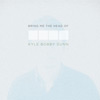 After last year’s Ways of Meaning, I have a hard time hearing Kyle Bobby Dunn the way I once did. There was something dark and deceiving about that record, something that didn’t show up in the music so much as it did in the subtext, but which changed the way the music felt nonetheless. On his latest album, a two disc set with over two hours of new music, Kyle continues to complicate his message. His ascetic approach is intact and as beautiful as ever, but the same enigma that haunted his last album is all over this record, too, and it’s even more noticeable.
After last year’s Ways of Meaning, I have a hard time hearing Kyle Bobby Dunn the way I once did. There was something dark and deceiving about that record, something that didn’t show up in the music so much as it did in the subtext, but which changed the way the music felt nonetheless. On his latest album, a two disc set with over two hours of new music, Kyle continues to complicate his message. His ascetic approach is intact and as beautiful as ever, but the same enigma that haunted his last album is all over this record, too, and it’s even more noticeable.
Dunn’s talent for the economical use of harmony and color is so developed that it can be difficult to see past. Abrasive, ugly, or unusual sounds always inspire audiences to ask questions, but pretty ones get an easy pass, as if their prettiness were sufficient reason to use them. Whether by design or accident, Kyle’s music takes advantage of that fact, or suffers from it, depending on your point of view.
Since I first started listening three years ago, his music has become more layered, but not because he has added more instruments or somehow changed his approach. Rather, the added dimensions are the result of his persistent use of the same materials he has always used, plus some help from contextual details like album and song titles. He has become more familiar with the pitches and colors his music employs, and also more familiar with the moods they evoke, so his ability to manipulate those ingredients has increased substantially. As a result, his music has also become more asymmetrical and severe. On a song like "Ending of All Odds," I hear pretty tones and bittersweet harmonies, but the overall effect is more resigned and ghostly. "Parkland" is made up of mostly warm and enormous tones that stretch on for minutes at a time, but it feels impersonal in places and cold in others. Kyle’s music may be pretty, but I don’t think his pretty music always results from equally pretty inspiration. In the bright, swollen drones he produces, all kinds of nooks and crannies exist, and they are populated by moments of dissonance, shadow, and trepidation. Get too caught up in how attractive the music sounds, or in how relaxing it is, and those moments can go by unnoticed. Once these moments are heard, they are impossible to overlook, and they add a great deal of complexity to his work.
The big, spacious tones that Kyle is best-known for make that kind of subtlety possible in the first place. On this record, they also mimic some of the subject matter with which Kyle is working. Of the 15 songs on Bring Me the Head, at least five are references to locations around Alberta, Canada, and I think one of them ("Complétia Terrace") was recorded in Banff National Park. His decision to name his songs for these places, along with the length of the album, puts his use of scale, space, and time in the spotlight, rather than the pitches he selects. It is more natural, after all, to describe places in terms of their space and scale rather than by means of pitch.
This separation of space, time, and pitch in his music might also explain why his songs can sound one way, but feel almost diametrically opposite. If he is composing in terms of space first and pitches second, then it is easy to imagine each element developing independently of the other. However he does it, when Kyle puts all his elements together, the result is some of the most beautiful and ambiguous music I have heard this year, and easily one of the best albums of its kind.
samples:
- Low Point has made every song from this album available for streaming on their Bandcamp site. You can listen to every song by visiting here.
 
Read More
- Administrator
- Albums and Singles
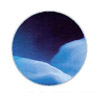 This three track EP given to attendees at a live performance in Germany earlier this year, is now available for those who did not attend. Each of the legendary artists contributes one piece to this all-too-brief release, which comes together just as brilliantly as if it were a stand alone release.
This three track EP given to attendees at a live performance in Germany earlier this year, is now available for those who did not attend. Each of the legendary artists contributes one piece to this all-too-brief release, which comes together just as brilliantly as if it were a stand alone release.
Von Euler-Donnersperg’s "Die Schnarrmaus des kleinen Fritz" opens, using what sounds like a dripping faucet to construct an insistent, continuous rhythm swathed in metallic echo.Eventually it transitions to a jumpy, cut-up collage of metallic rattling and percussion before submitting to a digital mangling at the end.The result is a unique combination of texture and rhythm, never fully falling into either end of the spectrum
Köner's "Le Bateau Ivre" is the shortest piece, clocking in a little under four minutes.While it has bit less of the frigid, tundra-like sound of his usual style, it still trades in that sparse, but melodic use drone that he uses so well.Obscured by shadow, there is a beautiful melody hiding, but it never fully appears.
Asmus Tietchens' "L10RA" takes up more than half of this EP, which, as a self-confessed Tietchens fan boy, made me quite happy.Opening with obscured layers of static, the subtlety is upset by understated surges of time-worn noise, sounding like lost recordings of early gramophones appearing out of thin air.He continues this dynamic, pushing the mix into a louder, more forceful one before pulling back and letting space in.It has that distinct Tietchens sound, which is hard to qualify but is undeniably brilliant.
Even disconnected from the performance (which surely was brilliant given the lineup), this brief mini album stands on its own as a compilation of new material from three of the most respected sound artists currently active today.
samples:
- Ditterich von Euler-Donnersperg - "Die Schnarrmaus des kleinen Fritz"
- Asmus Tietchens - "L10RA"
- Thomas Koner - "Le Bateau Ivre"
 
Read More
- Administrator
- Albums and Singles
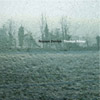 Köner's solo work has always been characterized as having a definite cold, frigid quality to it, both sonically and through the imagery he has employed. This new work is no different, titled after a Russian archipelago in the Arctic Ocean where nuclear testing occurred. His his approach to the sound is as desolate, but fascinating as ever.
Köner's solo work has always been characterized as having a definite cold, frigid quality to it, both sonically and through the imagery he has employed. This new work is no different, titled after a Russian archipelago in the Arctic Ocean where nuclear testing occurred. His his approach to the sound is as desolate, but fascinating as ever.
The first of the three pieces that comprise Novaya Zemlya is perhaps the most sparse.There is an overall distant, isolated sound, with the occasional thunderous sound cutting through, heavily skewed to the bassier end of the spectrum.Eventually droning bass sounds appear, with other thumps far off sounding like a stray beat from a Porter Ricks record.In the final moments, an obscured, but noticeable sub-melodic drone appears, adding the tiniest bit of warmth to the otherwise windswept tundra.
The closing piece follows a similar template, pairing looped field recordings with icy drones. This pair certainly puts a strain on a sub-woofer but still manages to be pleasant to the ear.Distant heartbeat like pulses and shards of delicate sound eventually surface, but on the whole there is more of an abstract, sound collage structure rather than one laden with rhythm or melody.
The middle segment is where the template is reshaped the most.A subsonic rumble that almost resembles a drum beat can be heard in the distance, but amongst the resonating bass drones there is a sense of melodic progression that encompasses most of the nearly 13 minute duration of the track. While it maintains the cold ambience of the album, it does not feel as bleak or as isolated in comparison, and a brief voice sample humanizes the otherwise remote darkness.
Novaya Zemlya is a fitting, and worthy addition to Köner's chilling, minimalist discography. Although he has not been overly prolific in the past decade or so, each catalog entry has been a strong statement of intent, and this is no different.While he works in sounds and moods that other artists trade in, it is his distinct sound, be it the clever use of reverb or the emphasis on low frequency sounds, that gives his work a distinct feel all its own, and this is no exception.Rarely could a piece of music inspired by a frozen nuclear testing ground come across as so inviting and compelling.
samples:
 
Read More
- Administrator
- Albums and Singles
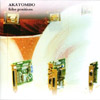 On his third full length release, Paul Thomsen Kirk continues his modernized take on the late 1990s/early 2000s electronic music that is as much about dissonant textures as it is captivating beats and rhythms. It perfectly balances that sense of familiar and fresh, and it helps to renew my faith that electronic dance music can still be artistically relevant.
On his third full length release, Paul Thomsen Kirk continues his modernized take on the late 1990s/early 2000s electronic music that is as much about dissonant textures as it is captivating beats and rhythms. It perfectly balances that sense of familiar and fresh, and it helps to renew my faith that electronic dance music can still be artistically relevant.
The first Akatombo album, Trace Elements, was released on Colin Newman and Malka Spiegel's Swim~ label in 2003, and his work continues to exemplify that label's ethos of danceable electronica with a greater artistic depth than most, even at the time it was active.Nearly a decade later, with that genre hitting lowest common denominator status of quality, it is refreshing to hear an album that innovates, while still remaining grounded and listenable.
Opener "Kleptokrat" and "Masked" both go for Kirk's take on the big beat sound, with massive, reverberating drums and dubby bass locking into a steady, monolithic groove while layers of synth noises and voice samples pop out here and there to keep things flowing.The blunt force beats appear again on "The Right Mistake," but obscured by electronic interference and machinery noise, and with the added bonus of squelchy 303 synth lines and heavy filter sweeps.
In other places, the sound has more in common with old school drum and bass, like the breakbeats and looped instruments of "Melt Again," with its over-driven noisy outbursts, definitely calls to mind the best of the late '90s."Dominion" has a similar sensibility, with its submerged beats and guitar stabs (by co-producer Makoto Kubota) pushing everything into a boisterous, but compelling mass of sound and noise.
Variety is the key here, however, and the slow, atmospheric "Shi-Shi Mai" exemplifies this, keeping the tempo slow and the rhythms quieter in the mix."Hikiko Mori" is another restrained one, more stripped down with muted beats, but an emphasis on heavily layered synth textures and spaciousness.The dark ambient "Necessary Fiction" also stands out, with an emphasis on the beatless space as opposed to driving rhythms.
Like his previous release, Unconfirmed Reports, False Positives comes in a lovingly hand-made package with a bonus DVD-R of videos by Kirk, although most of which are films made for tracks on the previous album.They fit the Akatombo sound perfectly, consisting mostly of collages and abstractions of his urban Japanese adopted homeland, with a graininess that is the perfect visual equivalent of the raw, occasionally dissonant sound on most of the tracks.
Kirk’s work as Akatombo certainly has twinges of nostalgia throughout, but it sounds very much contemporary, and manages to combine the use of big, loud rhythms with layers of moody, complex electronics.Even without the rhythms, this would be a strong work, which is no easy feat.With the beats, however, it is a complex, nuanced work that unravels more and more with each spinning.
samples:
 
Read More
- Administrator
- Albums and Singles
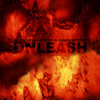 Daniel Menche discussed on his now infamous blog how his attendance at a Karkowski show was a major inspiration and motivation for his now prolific career in sound art. I would imagine that for that reason he would have some sense of intimidation working with his hero, but this live in the studio collaboration shows no sense of trepidation, just two masters shaping sound into frightening and fascinating sculptures.
Daniel Menche discussed on his now infamous blog how his attendance at a Karkowski show was a major inspiration and motivation for his now prolific career in sound art. I would imagine that for that reason he would have some sense of intimidation working with his hero, but this live in the studio collaboration shows no sense of trepidation, just two masters shaping sound into frightening and fascinating sculptures.
The collaboration is split into six untitled pieces for the sake of the listener, though it is relentless in its hour-long duration.The opening of skittering drum sounds alone before the rattling digital tones kick in, make for one of the few sparse elements in this recording.Beyond here, it gets denser and thicker.Unlike some of Menche’s more open and ambient experiments of late, this stays more in the realms of his earlier harsh work, though with more of an electronic sheen instead of overdriven tube amps.
As the first section pushes on, the rhythm elements stick around as metallic scrapes, buzzing tones, and nasal electronic pulses cut through, the mix eventually becoming dominated by the high pitched noise frequencies, though the drums still stay buried there.This continues on, being complimented by some deep overdriven rumbling, blasts of static and higher, almost chiming tones that could be musical in some other dimension.
The static eventually supplants the high pitched noises, being cut up like a helicopter matched with hissing air compressors and artifacts of cheap time-stretched effects.Eventually this takes a back seat to pure harsh static that recalls the halcyon days of the harsh noise scene, which both of these artists were pioneers in.This continues on, the percussive thump eventually rising up to make itself known, but always stays under the din.
The last segment continues on with the thump, but the noise begins to break away, sheets of noise splashing about, crunchy distortion, and painful buzzing that morphs into painfully shrill tones, which are what closes the disc on its own, leaving a ringing that lasts in the ears after the disc closes.
This disc in some ways does recall the early golden days of harsh noise in its pure electronic abstraction and chaos, yet rather than just pummeling with volume instead it stays a bit more restrained, allowing the variety of textures that are here to be experienced rather than just suffered through.As the first of two studio collaborations, I'm now eager to find out how the second one recorded will turn out.
samples:
 
Read More
- Administrator
- Albums and Singles
 A new Comus EP has been on the cards for a few years as the group reinvigorated itself with a number of successful reunion shows. New songs crept into their set and finally a mini-album of fresh material has made it out into the wild. Not only that, the three studio recordings are bolstered with a bootleg recording of a 1972 performance of "The Malgaard Suite," their aborted second album (not to be confused with 1974’s To Keep from Crying). Overall, it does not reach the dizzying heights of First Utterance but it is a worthy return for such a legendary group.
A new Comus EP has been on the cards for a few years as the group reinvigorated itself with a number of successful reunion shows. New songs crept into their set and finally a mini-album of fresh material has made it out into the wild. Not only that, the three studio recordings are bolstered with a bootleg recording of a 1972 performance of "The Malgaard Suite," their aborted second album (not to be confused with 1974’s To Keep from Crying). Overall, it does not reach the dizzying heights of First Utterance but it is a worthy return for such a legendary group.
I had the pleasure of hearing two of these songs during Comus’ set at David Tibet’s 50th birthday celebration concerts in 2010 and, as I noted at the time, they worked very well next to the original songs. The title track in particular is classic Comus as they herald their return to consciousness, waking from the musical coma the group has been in for 40 years. While Roger Wootten’s voice has aged, it is still powerful and full of danger, though his delivery of the chorus is strange to say the least as he attempts some kind of demonic Louis Armstrong voice. On the other hand, Bobbie Watson sounds as good as ever, her virginal voice a perfect counter to Wootten’s infernal howls. The group’s return is cemented when Colin Pearson puts his bow to his viola and the panic sets in. The only blemish is the inclusion of clarinet at the end which does not suit the Comus aesthetic at all; Jon Seagrott is a great player but I cannot help but feel that the flute would suit this song so much better.
If I recall correctly, "The Sacrifice" did not catch my ear as much as "Out of the Coma" at the London show but here it sounds excellent. Thematically, it is more in keeping with First Utterance though it feels a little reined in compared to the sheer darkness of those early songs. Here, the flute does make an appearance and it does work very well, a moment of lilting pastoral calm before the bloodshed occurs. It is Pearson’s viola that steals the show, his rapid arpeggios mimicking the stabbing actions of the lyrics. As the song climaxes, the flute invokes the ecstatic blood-lust of a mythical pagan ritual full of awe and fear.
The last new song is "The Return," which sounds a little like Opeth at their folkiest (and Opeth’s Mikael Åkerfeldt has never hidden his love of Comus so this is not much of a surprise). Here, intricate guitar work and Watson’s vocals create a mesmerizing web out of the music. I keep expecting Opeth’s death metal roar to erupt during the song’s middle section but instead Comus retreat into a gloomy cave of processed vocals and bass which is more like an eerie take on Current 93’s "Moonlight, You Will Say" than anything else.
The inclusion of" The Malgaard Suite" is a bit strange as on one hand, unheard material from Comus’ glory days should be welcome but on the other hand, it is a tough listen considering the recording quality. I can hear the potential amidst the murk (it sounds like King Crimson were becoming more of an influence on the group’s songwriting in terms of structure and length) but it is a tiring listen as the different elements bleed into each other. I feel that I will probably be hitting stop after "The Return" when listening to this album in the future though that is purely due to auditory fatigue as the song itself is rather good.
On the surface, Out of the Coma does not recreate the mastery of First Utterance but I think that even if Comus had headed into the studio and finished "The Malgaard Suite" in 1972, they would struggle to top their perfect first album. Perhaps if Out of the Coma was limited to just the new studio recordings, it would hang better but even as it stands, it is a remarkable return from cold storage for a much loved and magical band of musicians.
samples:
 
Read More


